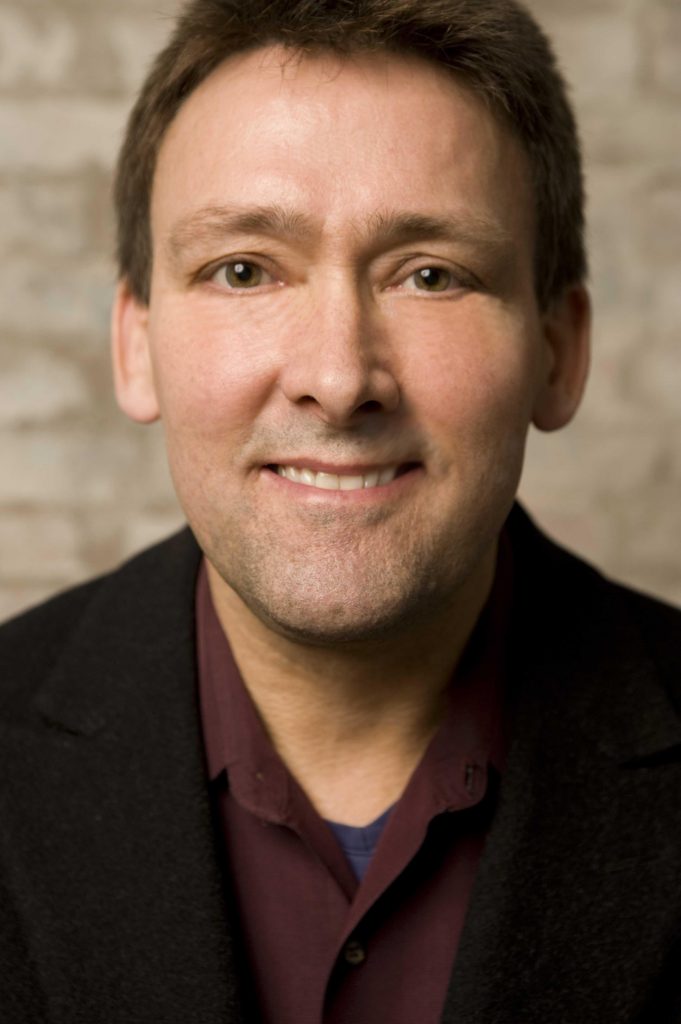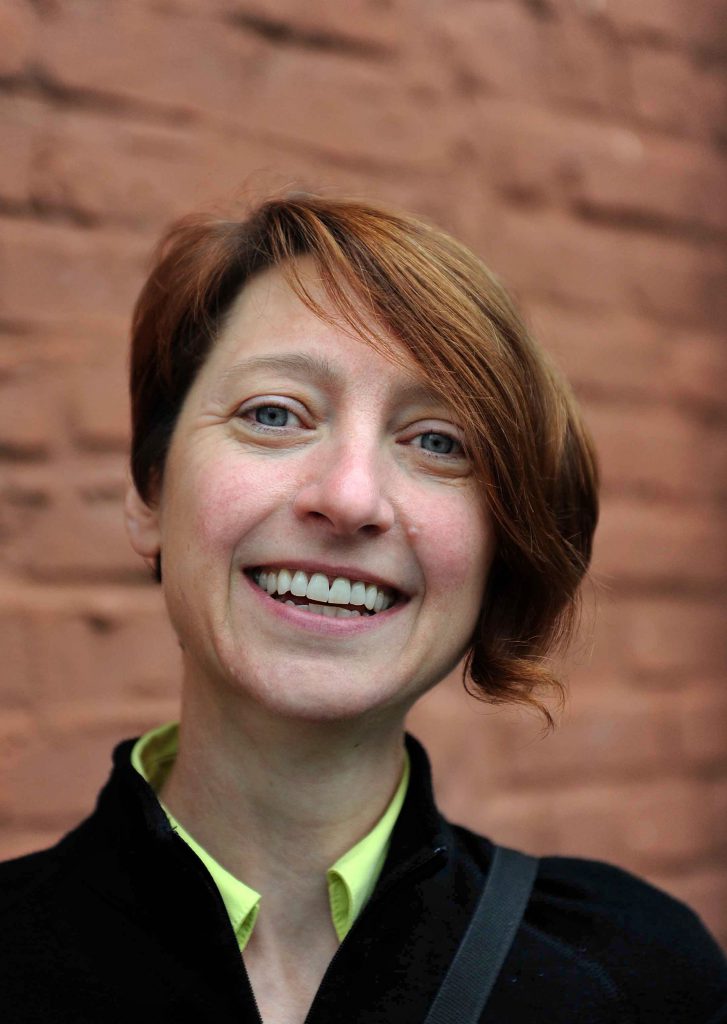
Ken Rinaldo is internationally recognized for interactive art installations developing hybrid ecologies with animals, algorithms, plants, and bacterial cultures. His art/science practice serves as a platform for hacking complex social, biological, and machine symbionts. Inventing and constructing techno interfaces allows illuminating and amplifying the underlying beauty, and intertwined symbiosis existent in natural living systems.
Living systems as a model have always been THE tool to critically interrogate technology, itself now enacting evolutionary survival instincts, and emergent self-aware software agents.
As biological species have emerged, so too an algorithmic species is arising. The availability of knowledge at the fingertips of most has changed the nature of how we imagine and create, and the individual now joins an emergent cognition of web knowledge.
Digital visualization and fabrication technologies are increasingly supplanting the hand of the artist, and the computer has further become an ideational amplifier. Epistemology has always been about lenses, and when lenses were analog and made of glass, they changed our world views profoundly. Our lenses are still made of glass, though now silicon and algorithms are supplanting optical lenses. Instead, data-based algorithmic ways of knowing are becoming predominant. These technologies, in association with biological procedures, such as CRISPR Cas9, will undoubtedly mean a semi-living constructed species can and will appear.
Rinaldo is focused on theories of life, symbiogenesis, trans-species communication, and providing models for how technological systems can use structural and process lessons from nature to be more sensitive to all living species. Bio-art, interactive installation, non-violent action, animation, food systems, trans-species artworks, robotic sculpture, and rapid prototyping are all areas I enjoy playing in. The critical use of technology influences, changes, and further mutate my ideas, while the algorithm increasingly becomes a selective pressure in our co-evolution with intelligent machines.
Rinaldo’s works have been commissioned by museums, festivals, and galleries internationally such as the Art laboratory, Berlin, McDonough Museum of Art, Innovation Media Research and Commercialization Center, US, ALIFE; Mexico, Centro National Arts Mexico, Nuit Blanche, Canada, Museum of Contemporary Art; Chicago, Kiasma Museum; Finland, World Ocean Museum; Russia, Ars Electronica; Austria, National Center for Contemporary Art; Russia, Lille International Arts Festival; France, la Maison d’Ailleurs; Switzerland, Vancouver Olympics; Canada, Platform 21; Holland, Transmediale; Berlin, AV Festival; England, Caldas Museum of Art; Colombia, Arco Arts Festival; Spain, Te Papa Museum; New Zealand, Centro Andaluz de Arte Contemporaneo; Spain, Pan Palazzo Delle Arti; Italy, V2 DEAF; Holland, Siggraph; Los Angeles, Exploratorium; San Francisco, Itau Cultural Museum; Brazil, Biennial for Electronic Art; Australia and the
Rinaldo was the recipient of an Award of Distinction in 2004 at Ars Electronica Austria for Augmented Fish Reality and first prize for Vida 3.0 Madrid for his work Autopoiesis, which also won an honorable mention in Ars Electronica in 2001.
In 2008 Ken Rinaldo and Amy Youngs were awarded a Green Leaf Award from The United Nations Environment Fund for the Farm Fountain. He is the recipient of three Battelle Endowment grants as well as a cultural Olympian for the Vancouver Olympics in 2009.
Rinaldo is a member of the Senior Academic Board for Antennae Magazine and author of Interactive Electronics for Artists and Inventors. His work has been featured on the radio and TV internationally, including BBC, ORF, CNN, CNET, CBC & the Discovery Channel. Select publications include Art and Electronic Media by Edward Shanken, Evolution Haute Couture Art and Science in the Post-Biological Age edited by Dmitry Bulatov, Art and Science Steve Wilson, Inside Art E Sciencia edited by Leonel Moura, Politics of the Impure V2 Publishing, Digital Art by Christiane Paul, Information Arts by Steve Wilson, Contemporary Italy, NY Arts Magazine, NY Times, Art Press Paris, Tema Celeste Italy and Wired Magazine.
Rinaldo is a contemporary artist and professor teaching neo-conceptual approaches to interactive robotics, bio-art, 2D/3D animation, 3D modeling, rapid prototyping, and broad art practices. He became an Emeritus Professor within Art & Technology in the Department of Art, within the College of Arts & Sciences and The Ohio State University in 2020 and began teaching a masters class, for the Central Academy of Fine Arts in Beijing China in March of 2021.

Amy M. Youngs creates biological art, interactive sculptures, and digital media works that explore interdependencies between technology, plants, and animals. Her practice-based research involves entanglements with the non-human, constructing ecosystems, and seeing through the eyes of machines. She has created installations that amplify the sounds and movements of living worms, indoor ecosystems that grow edible plants, a multi-channel interactive video sculpture for a science museum, and community-based, participatory video, social media, and public webcam projects.
Youngs has exhibited her works nationally and internationally at venues such as the Te Papa Museum in New Zealand, the Trondheim Electronic Arts Centre in Norway, the Biennale of Electronic Arts in Australia, Centro Andaluz de Arte Contemporáneo in Spain, and the Peabody Essex Museum in Salem, MA.
She has earned an Individual Artist Grant from the Ohio Arts Council, contributed writing to interdisciplinary publications such as Leonardo and the recent book, Robots, and Art, and her work has been profiled in books such as, Art in Action, Nature, Creativity & our Collective Future.
She has lectured widely, at venues such as the Australian Centre For the Moving Image in Melbourne, Australia, and the Walker Art Center in Minneapolis, MN. Born in Chico, California, she moved to San Francisco, where she received a BA in Art from San Francisco State University. On fellowship, she attended the School of the Art Institute of Chicago and earned an MFA in 1999.
In 2001 she joined the faculty at the Ohio State University where she is currently working as an Associate Professor of Art, leading interdisciplinary grant projects and teaching courses in moving image, eco-art, and art/science.